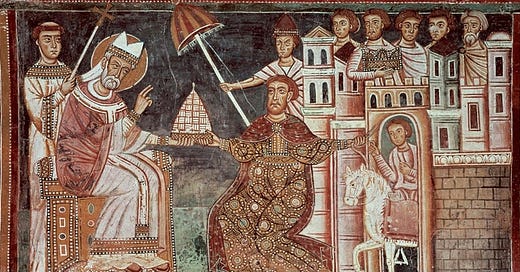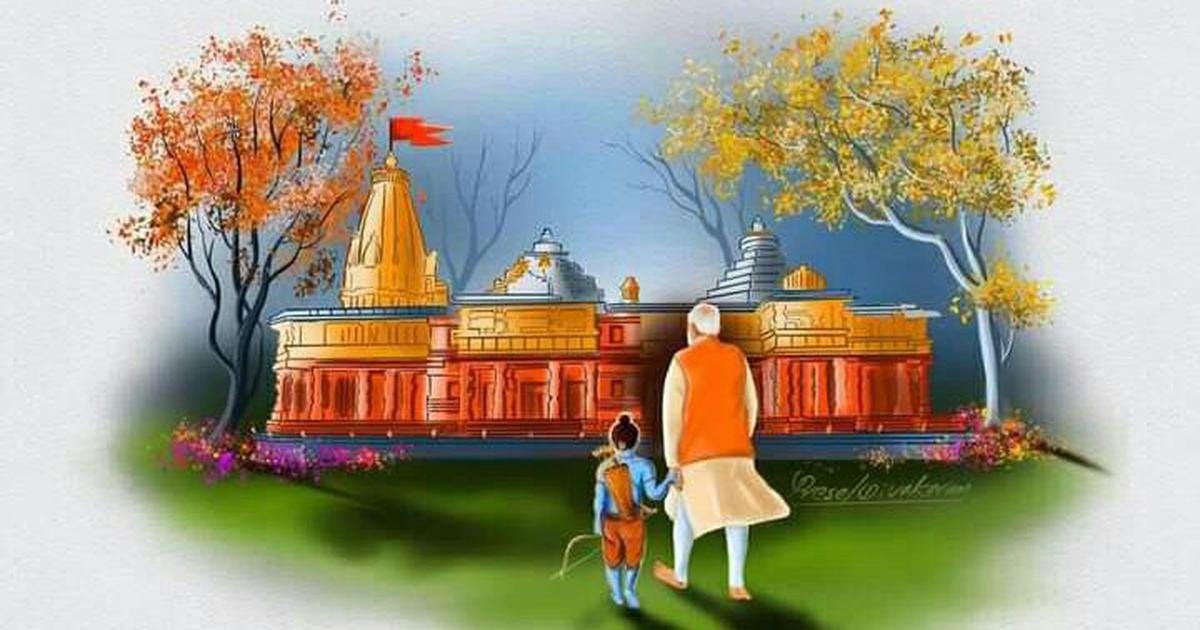Democracy disguised as authoritarianism; Authoritarianism disguised as a corporate monarchy
The merger of Politics and Religion in India
In India, every phone and every television set are buzzing with only one word: Ayodhya. Maybe it won’t be a big deal for people living in other countries. Most of the world has no clue, and is probably going through its own tremors with the ongoing Israel-Gaza conflict. Meanwhile, what we are witnessing here, in India, and what no one wants to talk about, is a clear merger of politics with religion. The doors for Christianity to turn into the official religion of the Roman Empire were opened soon after the Roman emperor Constantine converted to Christianity. Just like him, his successor, Emperor Theodosius I issued the edict of Thessalonica, making Christianity as the official religion. Here in India, a similar story began with the placement of a golden-plated sengol in the Parliament building earlier last year. From that instance onwards, it was clear as to where India was heading. India has been a democracy with its own tectonic shifts in the past 75 years, but all that comes to a dramatic climax. It has entered its assimilation and is now forming a state religion - Hindu. But where did this idea come arise?
Hindu vs Muslim:
The pitting of Hindu vs Muslim is not a new concept and was implemented ferociously by the British. During the British Raj, a narrative was set in all sorts of publications that created and enhanced this divide. This, in effect, was to enrich their hold onto the Indian populace by keeping them divided. They thought that it was better for the subjects to be fighting within themselves, providing a safety net to the rulers who were ruling from London. It was a tactic that worked. It wiped out years of bonding that had driven the Bhakti movement. It painted every Mughal Emperor as a devil in the conscience of the public. It forgot the good deeds of Muslim rulers like Akbar and some terrible deeds done by the armies of Hindu rulers. The picture that was painted was black and white with no grey spots in between.
The conflict in Ayodhya is not a new one; it started in the 15th century with the consecration of a mosque by a commander in the army of Babur. It is believed that this mosque was built on the ruins of the temple of Bhagavan Ram, and is believed to be his birthplace. The place itself was a hill fort called Ramkot, which was destroyed by the Mughal rulers.
This is a historical fact.
Let’s keep it aside for a second.
While we fight, let’s dig into what is Hinduism?
Sanatana Dharma is not what it was in the India of 2500 years past. Both Hindu and Hinduism are very modern terms. Sanatana meant “that which is eternal,” not that which is eternal for Hindus, but to every living and non-living thing on the planet, and dharma meant “law of nature,” not the law of Hindus. Given the polarization of today, it may be difficult to envision a world where meanings of the words were simple and they did not come with a set of synonyms or connotations which would muddle up their meaning. These set of doctrines, laid up in the texts called Vedas, were experiences of the yogis who lived in those peaceful times. They were fighting in a territory that transcended the material realm. Veda or Vedam meant ‘that which is experienced.’ ‘Swayam vedam’ which is loosely translated to ‘that which falls upon the experience of the one who witnesses existence.’ All these set of experiences, which naturally held a lot of incidents relating to nature and food, were described in the four Vedas. These yogis were operating on the planes of consciousness where the mind is freed from the bondages of life and death. Vedas were techniques used by the yogis to live a better life or, more importantly, to understand death.
Okay, so how did this enlightening experience turn into a hate-mongering nightmare of today?
For that, we’d have to check the literature that came much later after the Vedas were first envisioned. In the centuries ranging from 5th BC to 5th AD, a whole new form of literature developed in which the stories of gods - which were previously associated with man and his mind and body - were turned into symbolisms, lyrical metaphors with hidden messages in them. These weren’t bad at all; in fact, they were used to spread enlightenment within the population. The grandest of these were the Ramayana and the Mahabharata. Stories of kings and queens told with poetic metaphors that had hidden meanings about the workings of the mind. Sadly, the hidden meanings were lost, and what remained were the outer material bodies. This is the antithesis of what the stories were actually pointing towards. What people are today calling Lord or Bhagavan comes from an ancient language that splits the word in two, namely, Bhagga and raga, meaning ‘one that has destroyed lust.’ The Gods were humans who had destroyed the forces within them, which were a hindrance between them and liberation. In 2500 years, the meanings of all these words have changed. All those symbolisms are now buried deep under the pillars of the temple that’s being built in Ayodhya, and all that remains is a figurine which has no spiritual soul. How could it though? What the rishis and yogis were doing was performing scientific experiments within the 6 feet of their body; they were not there to change the world.
Today’s hostile capture of these ideas and calling the ritualistic elements - which were obviously invented and used for the benefit of a few - as the religion is yet another leap into the dark ages. The eternal law of nature is long forgotten, and in its place only remains hatred, anger, animosity towards the enemy - the Muslim. The Sanatana was for everyone; it encompassed each animal on this planet. If it’s Sanatana, it cannot be different for a Muslim or a Christian because it is what nature decided. Nature takes swift action against those who generate anger, animosity, jealousy, lust, or other forms of cravings and aversions. It punishes those people with more anger, more lust, and benefits the ones who generate love, peace, and harmony. In which case, it is better to leave this moment to nature to decide.
In the present moment, when divisive narratives threaten to tear the fabric of society, it becomes imperative to recognize the transient nature of such regimes. The ephemerality of empires underscores the enduring strength of shared humanity and the resilience of collective conscience. History stands as a testament to the inevitability of change and the cyclical nature of societal evolution.
The current transition re-imagines citizens as subjects and the leader as the destined king. All the iconographies coming out recently point in that direction. The founding stones of democracy are already in ruins with the capture of its institutions, and we have thus entered into a corporate monarchy. This monarchy is similar to what was in place pre-British and pre-Mughal. The so-called golden era has to have a caste system to keep it running and that’s the obvious next step when the current challenges are overcome. This system only benefits the select few, creates oligarchs, marginalises the subjects and crushes dissent. It is only a utopian vision of what times would have been like without imagining the morals and value systems that would have been present during the time of these kings. The picture seems quite bleak from here onwards. But there’s a message in the timeless wisdom of history - that things change and sometimes faster than we might imagine.
So during this time of communal hatred and fear mongering what we can keep in mind is this, from what we have learnt from history, is that no emperor, no matter how powerful or tyrannical, reigns eternally. Even Rome which brought in a very political form of Christianity -excluding its spiritual message of love and peace- had an eventual fall.






